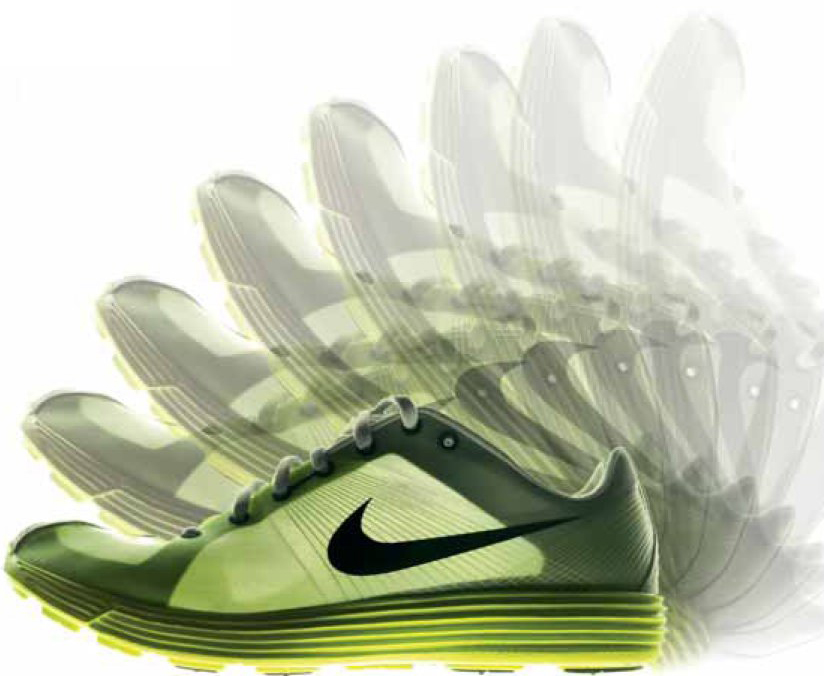Liquid Crystal Polymers (aka Liquid Crystals)
The sports industry has a thirst for new materials and technologies, using them just as much to create heroes for a specific brand story as they do to enhance performance. In the Nike Flywire® technology used in the Lunar Racer shoe, a new material sandwich was designed to create this ultra-lightweight running shoe. The material hero in these shoes is Vectran® a brand of fibres that is a quarter of the diameter of a human hair and weight-for-weight, five times stronger than steel. These fibres are sandwiched between a TPU (thermoplastic polyurethane) mesh to create a shoe upper that is as thin and translucent as a second skin. Vectran® is classified as a liquid crystal polymer (LCP).
It’s difficult to describe succinctly the technical background regarding LCPs, partly because they are neither solid nor liquid. The dual properties of fluidity and solidity are partly due to the crystal structure that makes up the solid. In this state the crystals have different properties along different axes, a characteristic known as anisotropy. These two properties deliver vastly different types of materials. For instance, they are used in TVs in their liquid form and in their solid form take the form of super fibres such as Vectran® or Kevlar®, both of which are known for extreme tensile strength. Vectran® is a fairly new addition to the LCP family of fibres and appears to have a successful product application in the Nike shoe.
Image: Nike Lunar running shoe

Key features (solid LCPs)
•Good chemical resistance
•Extremely high strength
•Excellent abrasion resistance
•Excellent dimensional stability
•Retains properties at high temperatures
•Excellent cut resistance
•Food grade
•Brittle in one direction
•Recyclable
Sources
Available from specialist suppliers.
Sustainability issues
Petroleum-based, so not sustainable long term, but can be recycled.
Production
LCPs can be formed using conventional thermoplastic techniques and are suited to thin, sectioned, intricate shapes. This is due to the fact that when injection moulding LCPs they display excellent flow which means they can be moulded into very thin sections.
Typical applications
Apart from fibres, one of the major applications is in LCD displays, where the liquid crystals are sandwiched between two pieces of glass, with a voltage changing the arrangement of the crystals. Another design friendly application is in switchable frosting window glass, which works on a similar principle to the TVs. Forms of solid LCPs have also been used to replace stainless steel in medical applications due to their high temperature resistance meaning the products can be sterilized. Another area in which liquid crystals are used is in thermochromic effects, surfaces that change colour according to temperature.
Derivatives
–Xydar®
–Vectra®
| + | – |
|
–Extremely strong and lightweight –Good chemical resistance –Easily moulded –Recyclable |
–Forms weak weld lines –Relatively high cost –Only available from specialist suppliers |
